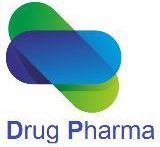If you have a rosy tinge to your cheeks and dilated blood capillaries around your cheeks and nose, you possibly have rosacea. This condition is often incorrectly referred to as adult acne. This is an inherited condition that shows up on the face as dilate broken blood vessels (telangiectasia), a tendency towards flushing, and little breakouts of tiny white pustules. This condition predominately affects men and women with a fair complexion, perhaps because fair skin is more susceptible to sun damage, which results in dilated blood vessels that ultimately burst. The sun also damages the collagen, which is the support structure for blood vessels.

Rosacea wire trippers
The most common factors may trigger rosacea flare-ups, include exposure to sunlight, extreme temperatures, strong winds, spicy foods, alcohol consumption, and emotional stress.
Additionally, certain skincare products, hot baths, and vigorous exercise may also exacerbate rosacea symptoms. Being aware of these triggers can help individuals with rosacea take proactive steps to avoid or manage them, reducing the frequency and severity of flare-ups.
By incorporating lifestyle adjustments and following a personalized treatment plan, individuals can better control their rosacea and improve their skin’s health and appearance.
- Sun
- Emotional stress
- Hot weather
- Alcohol
- Spicy foods
- Exercise
- Hot baths
- Cold drinks
- Hot tea or coffee
- Wrong skincare products
Causes:
The exact cause of Rosacea remains unknown; however, several factors may contribute to its development, including genetics, environmental triggers, blood vessel abnormalities, Demodex mites, and inflammatory pathways.
These factors can interact in complex ways, leading to the manifestation of Rosacea symptoms. While the precise cause may still be elusive, understanding these potential factors can guide healthcare professionals in devising effective treatment plans for individuals affected by Rosacea.
- Genetics: Family history of Rosacea can increase the risk of developing the condition.
- Environmental Triggers: Exposure to certain environmental factors like sunlight, extreme temperatures, or strong winds may exacerbate symptoms.
- Blood Vessel Abnormalities: Abnormalities in blood vessels on the face may play a role in Rosacea development.
- Demodex Mites: These microscopic mites that live on the skin may trigger an immune system response, leading to Rosacea symptoms.
- Inflammatory Pathways: Inflammation in the skin is believed to be involved in it.
Symptoms of Rosacea:
Rosacea can present in various ways, and symptoms may include:
- Persistent Facial Redness: Redness, often resembling a blush or sunburn, may appear on the cheeks, nose, forehead, or chin.
- Visible Blood Vessels: Small, visible blood vessels known as telangiectasia may appear on the face.
- Papules and Pustules: Small red bumps or pus-filled bumps similar to acne may develop.
- Eye Irritation: Rosacea can affect the eyes, causing symptoms like dryness, redness, and irritation.
- Facial Swelling: In some cases, the face may become swollen, particularly in the nose area. Additionally, facial swelling can be one of the distressing symptoms of rosacea, causing discomfort and affecting daily life. It is important to seek medical advice and explore appropriate treatment options to address this issue and manage the condition effectively.
Treatment Options for Rosacea:
While there is no cure for it, several treatment options can effectively manage symptoms and reduce their severity. These include:
- Topical Medications: Prescription creams and gels containing antibiotics, azelaic acid, or other ingredients may be prescribed to reduce inflammation and redness.
- Oral Medications: In severe cases, oral antibiotics or other medications may be recommended by healthcare professionals.
- Laser and Light Therapies: Certain laser and light treatments can target visible blood vessels and reduce redness.
- Skincare: Gentle skincare practices, avoiding harsh products, and using sunscreen can be beneficial.
- Avoiding Triggers: Identifying and avoiding triggers that worsen Rosacea symptoms is essential in managing the condition.
Treatment
To stabilize and treat rosacea, doctors commonly prescribe topical antibiotics, such as tetracycline, minocycline, doxycycline, and erythromycin. Additionally, dye laser treatments are sometimes recommended to help tone down the redness.
Moreover, these treatment options can effectively manage the symptoms and reduce the severity of rosacea, providing relief for those affected by the condition.
I recommend in-house salon treatments mean for irritated or inflamed skin types, comprising very mild steaming and soothing face packs. If properly done, salon treatments with the right products will take care of this condition in five to six months.
Conclusion:
Rosacea can be a challenging condition; however, with the right understanding and treatment, individuals can effectively manage its impact on their skin and overall well-being. For an accurate diagnosis and personalized treatment plan, consultation with a dermatologist is highly recommended. By seeking professional guidance, individuals can gain valuable insights into managing rosacea and improving their quality of life.
Similar topics:
- EYE BAGS AND PUFFY EYES https://drugpharmamagazine.com/skin-problems-and-how-to-deal-with-them-2/
- BLACKHEADS
- ROSACEA
- ZIT BUSTERS
